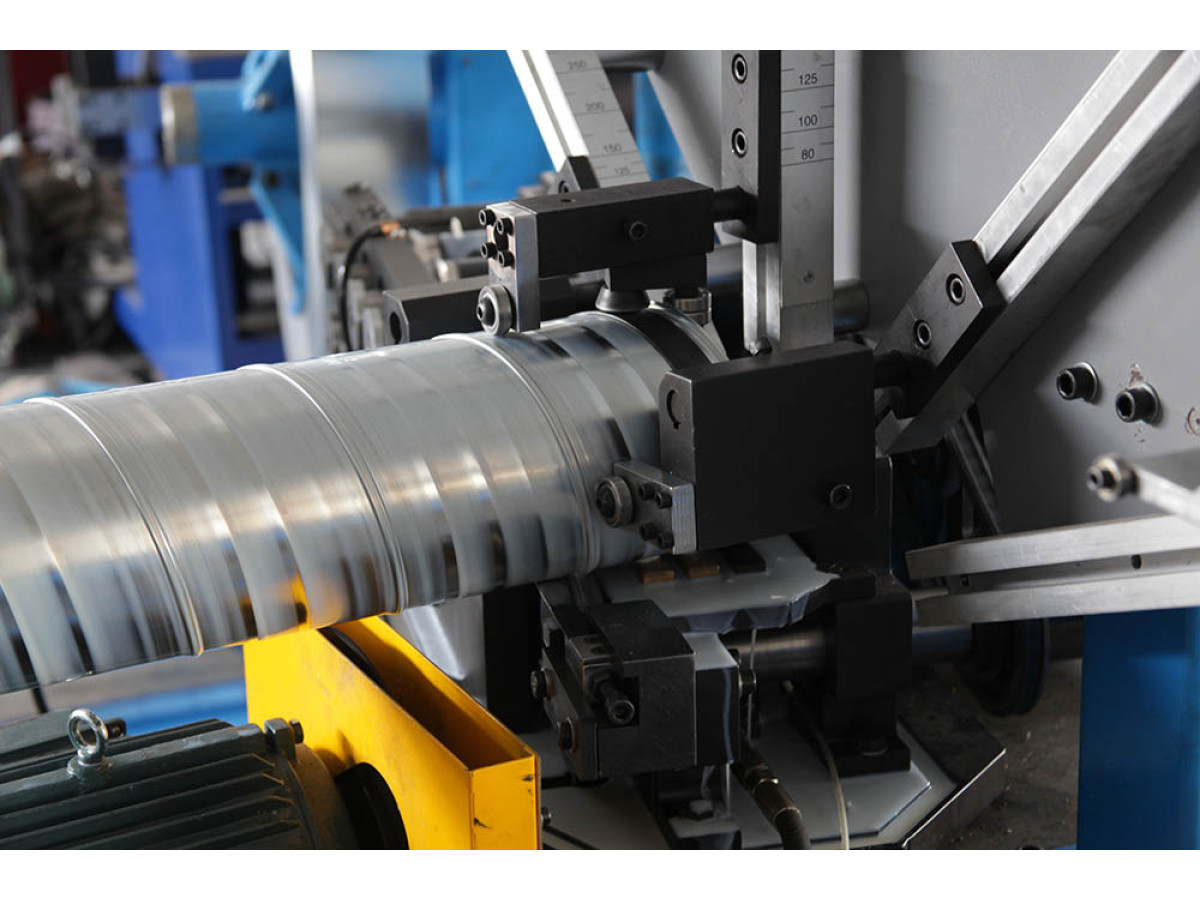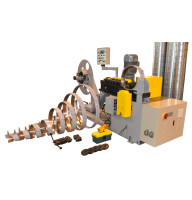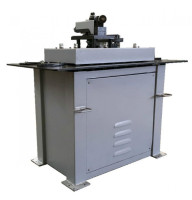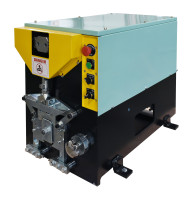What is the article about?
Spiral ducts play a crucial role in HVAC systems, providing efficient and consistent airflow. The traditional methods of fabricating spiral ducts are time-consuming and labor-intensive, limiting productivity and precision. However, with the advent of spiral duct making machines, manufacturers can now streamline their production processes and meet the growing demand for high-quality spiral ducts. This article explores the various sections of a spiral duct making machine, highlighting its features, benefits, and its potential to revolutionize the airflow system manufacturing industry.
What is the production technology of the air duct?
The production technology of air ducts involves several steps and processes that ensure the fabrication of high-quality ductwork. The specific production technology can vary depending on factors such as the type of duct, material used, and manufacturing requirements. Here is a general overview of the production technology involved in air duct manufacturing:
Design and Planning:
The process starts with the design and planning phase, where engineers and designers create the layout and specifications of the air duct system. This includes determining the required airflow, dimensions, and layout of the ductwork.
Material Selection:
The appropriate materials for the air ducts are selected based on factors such as HVAC system requirements, durability, insulation properties, and cost considerations. Common materials include galvanized steel, stainless steel, aluminum, and flexible ducting.
Cutting and Shaping:
Once the materials are selected, they are cut into appropriate sizes and shapes. This can be done manually using shears or automated cutting machines. The material may be cut into straight sections or pre-formed parts depending on the design requirements.
Joining and Connecting:
The individual duct sections are joined and connected to form the desired ductwork layout. This can be done through various methods such as welding, riveting, or using specialized connectors. Sealing tapes or adhesives may be used to ensure airtight connections.
Insulation:
If insulation is required, it is added to the air ducts to prevent heat transfer, reduce condensation, and improve energy efficiency. Insulation materials such as fiberglass, foam, or elastomeric insulation are applied to the duct surfaces.
Reinforcement:
In some cases, air ducts may require reinforcement to enhance structural integrity. Reinforcement techniques can include adding stiffeners or using reinforcement ribs along the duct sections.
Surface Treatment and Coating:
Depending on the material and application, the air ducts may undergo surface treatments or coatings to protect against corrosion, improve aesthetics, or meet specific requirements. This can involve processes such as galvanization, painting, or powder coating.
Quality Control and Testing:
Throughout the production process, quality control measures are implemented to ensure that the air ducts meet industry standards and specifications. This can involve visual inspections, pressure testing, leak testing, and performance testing to verify airflow and airtightness.
What is the advantage of spiral duct making machine?
The spiral duct making machine offers several advantages over traditional methods of fabricating spiral ducts. Here are some key advantages:
-
Increased Productivity: The machine enables manufacturers to significantly increase their production rate compared to manual fabrication methods. It automates the process of forming and spiraling ducts, reducing the need for manual labor and saving time. This enhanced productivity allows manufacturers to meet tight project deadlines and fulfill large-volume orders efficiently.
-
Precision and Consistency: Spiral duct making machines ensure precise measurements and uniform spiraling, eliminating human errors that are common in manual fabrication. The machines are designed to provide accurate dimensions and consistent spiraling, resulting in high-quality spiral ducts. This precision and consistency in fabrication contribute to improved airflow performance and energy efficiency in HVAC systems.
-
Customization Options: Spiral duct making machines offer flexibility and customization options to meet specific project requirements. Manufacturers can easily adjust the size, dimensions, and spiraling pattern of the ducts using the machine's settings. This adaptability allows for greater versatility in design and ensures that the ducts fit seamlessly into various HVAC systems.
-
Material Efficiency: The machines optimize material usage, minimizing wastage and reducing associated costs. By precisely cutting and forming the ducts, the machine minimizes the amount of material needed for fabrication. This efficiency leads to cost savings and contributes to sustainable manufacturing practices by reducing material waste.
-
Streamlined Workflow: Integration with computer-aided design (CAD) and computer-aided manufacturing (CAM) software allows for seamless workflow optimization. The machine can be connected to these software systems, enabling efficient design-to-production workflows. This integration eliminates the need for manual measurement transfers and reduces the chances of errors, enhancing overall productivity and accuracy.
-
Reduced Labor Requirements: By automating the fabrication process, the spiral duct making machine reduces the need for manual labor. This not only saves on labor costs but also reduces the physical strain and labor-intensive nature of manual duct fabrication. Operators can focus on supervising the machine and ensuring smooth operations, leading to a more efficient and comfortable working environment.
-
Improved Airtightness and Energy Efficiency: The precision and consistency achieved by spiral duct making machines contribute to better airtightness in the ductwork. This reduces air leakage and improves the overall energy efficiency of HVAC systems. By ensuring that the ducts fit tightly and evenly, the machine helps to optimize airflow and minimize energy losses, resulting in improved performance and reduced energy consumption.

How to choose a spiral duct making machine?
Choosing the right spiral duct making machine requires careful consideration of several factors to ensure it meets your specific production requirements and offers the best value for your investment. Here are some key factors to consider when selecting a spiral duct making machine:
Production Capacity:
Assess your production needs in terms of the volume and types of spiral ducts you plan to manufacture. Consider the machine's production speed and output capacity to ensure it can meet your production targets.
Spiral Duct Specifications:
Evaluate the machine's capability to produce the required range of spiral duct sizes, diameters, lengths, and spiral pitches. Ensure that the machine's range aligns with your specific project requirements.
Automation and Control Features:
Consider the level of automation and control features offered by the machine. Automation can streamline the production process and minimize manual labor requirements. Look for features like automatic material feeding, cutting, forming, and spiraling to enhance efficiency and reduce human error.
Precision and Quality:
Look for a machine that can consistently produce spiral ducts with high precision and quality. Consider the machine's cutting and forming mechanisms, as well as its ability to maintain accurate dimensions, tight tolerances, and consistent spiral patterns.
Material Compatibility:
Assess the machine's compatibility with the materials you plan to use for spiral duct fabrication. Ensure that the machine can handle the required material thicknesses and types, such as galvanized steel, stainless steel, or aluminum.
Flexibility and Customization Options:
Evaluate the machine's flexibility to accommodate different design variations and customization options. Consider whether it can produce spiral ducts with specific features like flanges, insulation, or special connectors based on your project requirements.
Maintenance and Support:Consider the machine's maintenance requirements and the availability of technical support from the manufacturer. Ensure that the manufacturer provides reliable after-sales service, spare parts availability, and support for troubleshooting and repairs.




